The Allure of Jumping Spiders
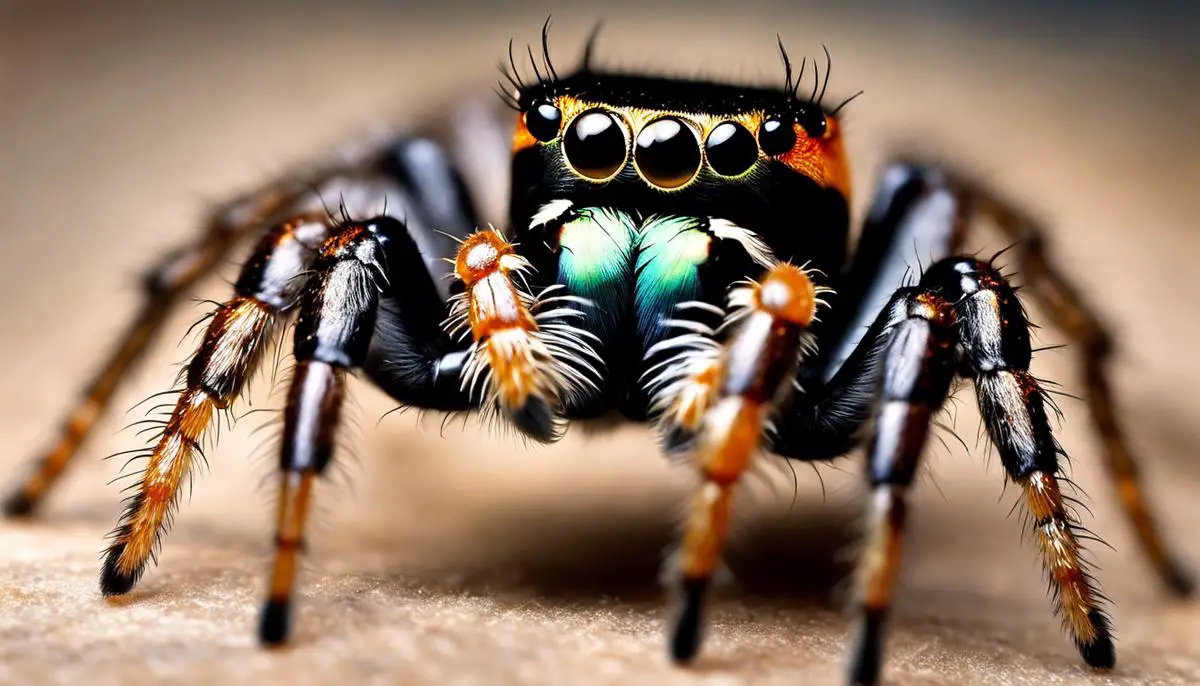
The enchanting world of jumping spiders offers a window into the remarkable complexities of arachnid life. Despite their small size, these spiders possess a suite of characteristics that intrigue the scientific community and captivate the public. With their large, inquisitive eyes and agile maneuvering, jumping spiders have a unique charisma that sets them apart in the arachnid kingdom. This exploration will unravel the biological and behavioral features that make them so fascinating and address how these traits influence our perceptions, breaking down the walls of fear and misunderstanding that often surround spiders.
Understanding Jumping Spiders
Jumping spiders, with their distinctive traits, are among the most captivating creatures within the spider family. Their unique abilities not only distinguish them from other spiders but also highlight the incredible diversity of the arachnid world.
In this exploration, we’ll delve into the characteristics that make jumping spiders a subject of endless fascination, from their exceptional vision to their intricate courtship dances.
Exceptional Vision
What sets jumping spiders apart from most of their eight-legged kin is their extraordinary eyesight. Equipped with four pairs of eyes, they boast a visual acuity that is rare among arthropods. The large, forward-facing pair of eyes functions like high-powered binoculars, enabling them to spot prey and navigate their surroundings with precision. This acute vision is vital for a predator that relies on pouncing accuracy to secure a meal.
Impressive Agility
As their name suggests, jumping spiders are renowned for their leaping ability. They can jump distances multiple times their body length. This impressive feat is made possible by their strong, muscular legs and a unique internal hydraulic system. They change the pressure of body fluid within their legs to spring themselves into the air, a skill they use to evade predators and capture prey.
Colorful Courtship
Jumping spiders are also known for their elaborate and colorful courtship displays. Males perform intricate dances to woo potential mates, combining vibratory signals with bold body movements. This elaborate ritual serves as a communication tool, allowing the male to demonstrate his suitability as a mate while avoiding any confusion with prey, which could have fatal consequences.
Intelligence and Learning
Surprisingly, these small spiders exhibit signs of intelligence and the ability to learn. Jumping spiders have been observed altering their hunting strategies based on past experiences, a remarkable ability for creatures with such a small brain. This cognitive capacity adds to their fascinating nature, suggesting a level of problem-solving skills that challenges our understanding of invertebrate intelligence.
Harmless to Humans
Despite their fierce hunting skills, jumping spiders are generally harmless to humans. They are not aggressive and only bite if provoked and in self-defense. Even then, their venom is not medically significant to humans. Most encounters with these intriguing arachnids are purely observational and can be quite enjoyable, given their curious and seemingly attentive nature.
In a world that often overlooks the smaller beings, jumping spiders offer a spectacular glimpse into the complex and beautiful intricacies of nature. Their remarkable vision, agility, and behavioral richness make them a fascinating subject for both scientists and casual observers alike. As we continue to study these extraordinary creatures, their unique characteristics are sure to intrigue and inspire our curiosity for years to come.
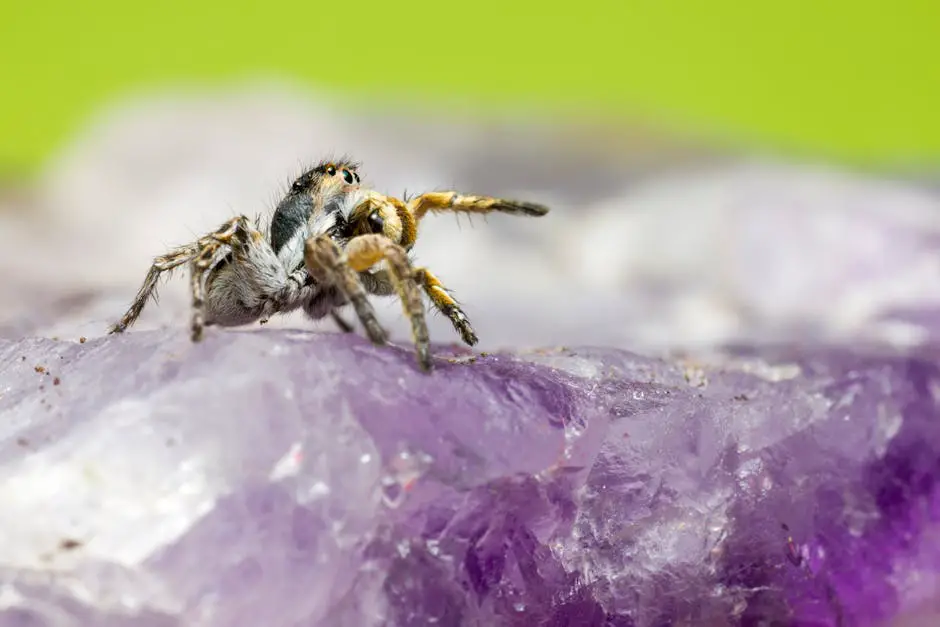
Jumping Spiders’ Behavior and Intelligence
Jumping spiders possess a remarkable level of intelligence for their size, which is showcased in their sophisticated hunting strategies and problem-solving abilities. These arachnids, part of the Salticidae family, demonstrate cognitive abilities that rival the ingenuity of much larger creatures.
Cognitive Skills and Problem Solving
One of the most fascinating aspects of jumping spider behavior is their ability to plan and execute complex hunting tactics. Unlike many other spiders that rely on webs to ensnare their prey, jumping spiders use acute vision and agile movement to stalk and pounce. They can gauge the distance and trajectory needed to leap onto their target – a skill indicative of advanced spatial awareness and foresight.
Studies have shown that when faced with obstacles between themselves and their prey, jumping spiders will often take indirect routes that demonstrate a form of insight typically not attributed to invertebrates. They seem to plot their course, at times going out of sight of their prey to find the best angle for attack. It suggests a level of working memory and the ability to navigate using mental maps, much like mammals and birds do.
Social Intelligence
Jumping spiders aren’t just solo artists; they also exhibit social intelligence, particularly during mating rituals. Males perform elaborate dances to attract females, which involves a series of movements that have to be precise, as the wrong step can mean the difference between finding a mate and being mistaken for prey. The males learn and refine their dances, implying an ability to adapt and learn from social interactions – a key indicator of intelligence.
Moreover, jumping spiders can also recognize and remember others of their kind. This astonishing fact reveals that their social cognition involves memory retention, recognition, and possibly even a form of ‘social etiquette’ that governs their interactions.
Tool Use and Manipulation
Although it’s a lesser-known fact, jumping spiders have occasionally demonstrated a primitive form of tool use. They’ve been known to use webbing not just for safety lines while jumping but also to manipulate their environment to aid in hunting. For example, some will anchor lines to confuse or ensnare prey. It points to their understanding of their surroundings and how to exploit them to their advantage, which is a rudimentary form of tool use.
Adaptation and Learning
A further testament to their intelligence is their ability to learn and adapt. Unlike many animals that follow purely instinctive behavior, jumping spiders can alter their hunting behavior based on past experiences. If a particular approach doesn’t work, they can change their strategy, showing learning ability and adaptability.
An Emerging Field of Study
As the study of invertebrate cognition progresses, jumping spiders continue to enthrall scientists with their capabilities. What these tiny creatures can teach us about intelligence, learning, and behavior extends our understanding of the animal mind. While they may not understand the world in the way humans do, the jumping spider’s complex behaviors suggest a robust and versatile cognitive system.
In the rich tapestry of life, the jumping spider stands out as a remarkable example of an invertebrate with advanced behaviors. Their brains, though minuscule, are complex enough to navigate their world with precision, ingenuity, and an even occasional flair for the dramatic. As we peel back the layers of their cognitive world, we gain valuable insights into the broader spectrum of intelligence across species.

Jumping Spiders and Human Perception
Jumping spiders, with their unique attributes and generally harmless nature, often draw adoration from humans, evoking a sense of endearment and perceived cuteness. This phenomenon, where a seemingly unlikely creature garners affection, can be explored through various psychological and emotional perspectives.
Anthropomorphism and Emotional Resonance
Humans have a natural tendency to anthropomorphize, or attribute human characteristics to non-human entities. This inclination stems from our deeply social nature and our propensity to connect emotionally with living things that seem to exhibit relatable behaviors or characteristics.
The jumping spider’s large, forward-facing eyes are reminiscent of human facial structures, enabling a sense of connection. These eyes, paired with their perceived expressive movements, can trigger our brain’s mechanism for empathy and bonding. This anthropomorphic connection can evoke the same nurturing responses we show towards our own species, particularly young and vulnerable members, whose large eyes and small features we inherently find cute.
The Aesthetic of Miniaturization
The concept of miniaturization often plays into our perception of cuteness. Small creatures like jumping spiders fit into this category, where their diminutive size relative to humans triggers an instinctual response of protection and affection. This is aligned with the “baby schema,” a set of infantile features such as a large head, round face, and big eyes, which are known to elicit caretaking behavior in other humans. Though a jumping spider is not a baby, the same psychological triggers can apply due to their tiny stature and proportionate features.
Novelty and the Element of Surprise
Jumping spiders often catch people off guard with their quick, precise movements. This element of surprise, paired with their harmless nature, can create a memorable interaction that leaves an individual with a positive impression. Additionally, the novelty of observing a spider leap through the air with great finesse can be a source of amusement and fascination, fostering a sense of endearment as one admires their agility and dexterity.
Interactive Engagement
Unlike many other spiders that remain stationary, jumping spiders are known for their curious and seemingly interactive behavior. They often turn to gaze directly at humans, which can give the impression that they are as interested in us as we are in them. This reciprocal engagement can foster a feeling of mutual respect and curiosity, further enhancing their appeal.
Natural Aesthetics and Harmlessness
Jumping spiders showcase a variety of vibrant colors and intricate patterns on their bodies, offering aesthetic pleasure to those who take the time to observe them closely. This appreciation for natural beauty can transform into affection, particularly when coupled with the knowledge that these spiders are not a threat to humans. The lack of fear allows for admiration to bloom, transforming a creature that might otherwise be met with apprehension into one that is perceived as charming and even cute.
Conclusion
In summary, multiple factors contribute to why humans often find jumping spiders endearing and cute. Our brains are wired to respond to certain visual cues, social behaviors, and aesthetic properties that these arachnids inadvertently possess. Their anthropomorphic features, miniature size, unexpected agility, interactive presence, and harmless disposition create a mosaic of traits that can endear them to the human heart. While spiders may typically be a subject of fear or discomfort, jumping spiders manage to leap over these barriers, securing a place of admiration within the human psyche.
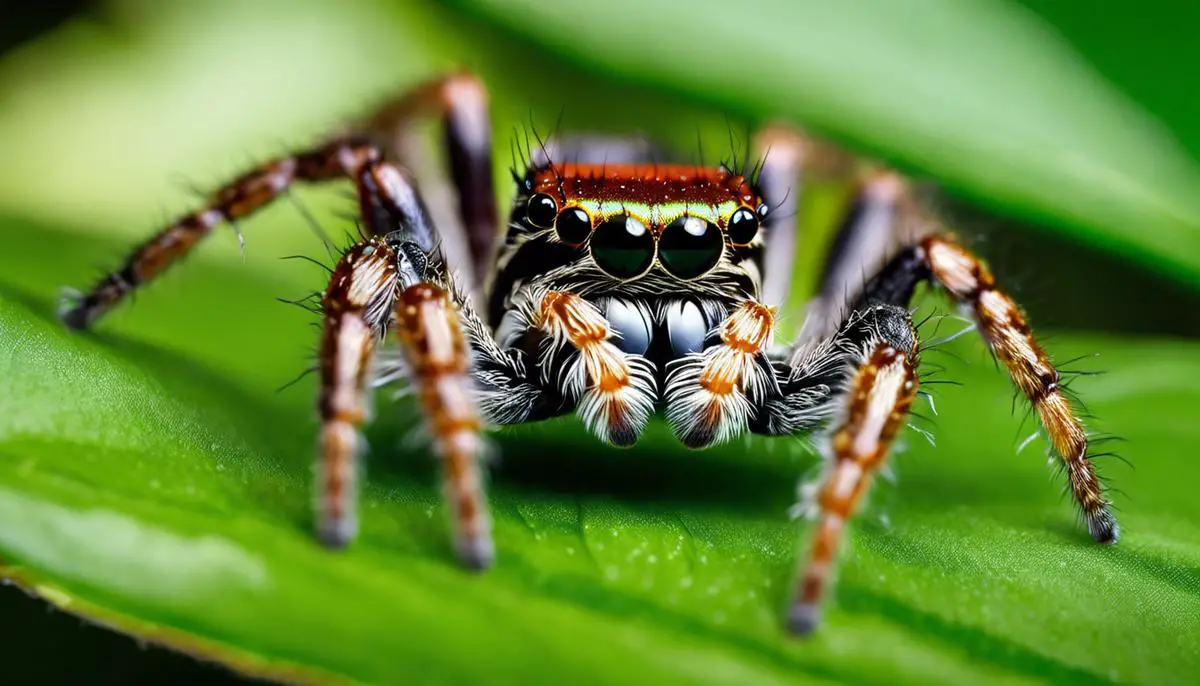
Jumping Spiders in Popular Culture and Media
Jumping spiders have spun their way into the tapestry of media and popular culture, capturing our imaginations with their charismatic eight-legged presence. These fascinating arachnids have been featured in various forms of media, often highlighting their unique behaviors and endearing qualities that resonate with audiences. From children’s books to scientific documentaries, and even making their notable appearances in horror and fantasy genres, jumping spiders have leapt from the natural world into the spotlight of popular culture.
In children’s literature, jumping spiders often emerge as characters brimming with curiosity and friendliness. Their depiction often centers on their playful nature, transforming them into lovable protagonists who navigate their tiny worlds with wide-eyed wonder. By illustrating these creatures with an emphasis on their peering, multi-lensed eyes, the literature invites young readers to empathize and connect with the spiders on a personal level.
Meanwhile, in scientific media, jumping spiders have been showcased for their remarkable cognitive abilities and distinct behavior. Television documentaries and online educational platforms delve into the intricate workings of these small yet mighty creatures. Viewers are often left in awe of their intelligence, as they witness firsthand how jumping spiders strategize and overcome obstacles, shedding light on their complex inner lives.
The world of film and television also draws upon the distinctive characteristics of jumping spiders, sometimes casting them in roles that magnify their persona. In the realm of horror, these spiders provide a source of creeping tension, their sudden leaps and unpredictable movements harnessed to deliver jump scares to an unsuspecting audience. On the flip side, in fantasy and animation, they might be portrayed as wise navigators of mystical realms, with their intricate web patterns serving as symbols of connectedness and creativity.
Art and photography have also embraced the visual appeal of jumping spiders. The burgeoning field of macro photography, in particular, has brought the vivid colors and dramatic eye arrangements of these spiders into high resolution. This attention to detail not only illuminates the spider’s beauty but also defies their traditionally spooky reputation, endearing them to a public more often trained to fear and avoid them.
On the web—pun intended—jumping spiders have taken on meme status. Their peculiar and sometimes human-like behaviors, such as waving or engaging in curious head tilts, make for shareable, adorable content that spreads across social networks. They’ve inspired a wealth of online conversations and digital art, becoming the unofficial mascots for those who appreciate the often-overlooked splendors of the micro-world.
Social media has also contributed to a shift in public perception. As researchers and enthusiasts share mesmerizing footage of these spiders in action, audiences are noting their intricate dances and the almost playful way they interact with their environment. Through platforms like YouTube and Instagram, people are finding a new appreciation for jumping spiders, seeing them not as fearsome pests but as engaging, complex creatures deserving respect and protection.
In the gaming world, jumping spiders present an archetype for characters that combine agility with precision. Video games often draw inspiration from the spiders’ ability to calculate leaps and navigate spaces, creating levels or challenges that mimic these skills.
Lastly, the cultural influence of jumping spiders is evident in consumer products. The distinct look of jumping spiders has inspired a range of merchandise, from toys and clothing to jewelry. Their eye-catching patterns and structures have found a place in the market, appealing to a diverse group of consumers, from nature lovers to those who find joy in the peculiar and offbeat.
While jumping spiders may be small, their cultural footprint is anything but. These fascinating creatures continue to capture the curiosity and admiration of the public, thriving in the diverse landscapes of media and popular culture. Through our ongoing fascination with them, jumping spiders have woven a complex web that connects them to our human experience, one that is likely to grow and evolve, much like the spiders themselves.
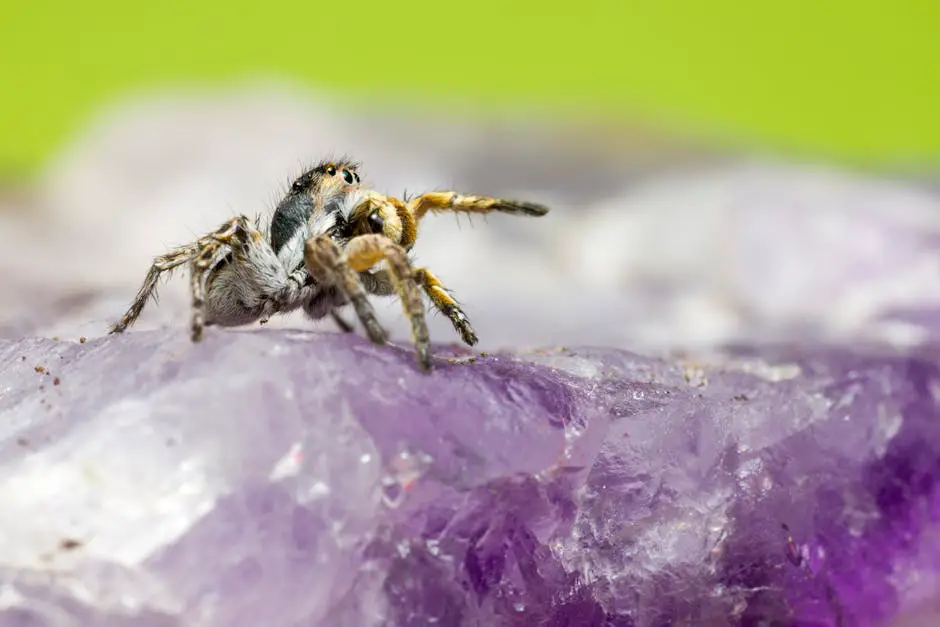
Conservation and Coexistence with Jumping Spiders
Jumping spiders, known scientifically as Salticidae, represent an incredibly diverse family of arachnids, recognized for their striking eyes and remarkable ability to leap. With over 6,000 species spanning various ecosystems globally, they play a crucial role in ecological balance, acting as both predator and prey. Conservation efforts for these tiny yet significant creatures are essential in maintaining the health of their habitats and our broader ecosystem.
Conservation Efforts
1. Habitat Preservation
Preservation of natural habitats is key to the survival of jumping spiders. Many species thrive in specific ecological niches such as forests, grasslands, and wetlands. Protecting these areas from deforestation, pollution, and urban sprawl is vital. Organizations like the World Wildlife Fund (WWF) work to conserve critical habitats, often partnering with governments and local communities to safeguard ecosystems.
2. Biodiversity Initiatives
Biodiversity initiatives aim to understand and protect the variety of species within an ecosystem. Researchers conduct surveys and studies to identify species of jumping spiders, assess their population numbers, and evaluate the health of their environments. Data gathered aids in creating targeted conservation strategies.
3. Sustainable Practices
Encouraging sustainable agriculture and forestry practices helps minimize habitat loss and pesticide use that can harm jumping spider populations. Integrated pest management (IPM), a sustainable approach to agriculture, often recommends using jumping spiders as natural pest controllers due to their predation on crop-destroying insects.
Coexistence with Jumping Spiders
1. Education and Outreach
Education is a powerful tool in promoting coexistence with jumping spiders. Outreach programs in schools and communities help dispel myths and fears surrounding spiders. By learning about the ecological roles and behavior of jumping spiders, individuals are more likely to appreciate and tolerate these arachnids.
2. Citizen Science
The public can engage in citizen science projects that involve tracking and reporting jumping spider sightings. These initiatives, often conducted through online platforms or mobile apps, not only raise awareness but also contribute valuable data for scientific research and conservation efforts.
3. Urban Planning
Urban environments can support jumping spider populations through thoughtful planning and green space design. Incorporating native plants and natural elements in landscaping encourages jumping spiders to thrive even in cities. Green roofs, vertical gardens, and urban parks provide a refuge for these adaptable creatures.
4. Responsible Pest Management
Homeowners and gardeners can adopt spider-friendly pest management by avoiding broad-spectrum pesticides and instead using targeted treatments if necessary. Encouraging natural predators like jumping spiders helps maintain a balanced ecosystem and reduces the need for chemical interventions.
Jumping spiders, with their distinctive traits and behaviors, are an integral part of our planet’s biodiversity. Protecting their habitats and fostering a harmonious coexistence with them are crucial steps not only for their preservation but also for the health of our global ecosystem. By recognizing the importance of these small predators and adopting conservation-minded actions, we can ensure that jumping spiders continue to leap across our landscapes for generations to come.
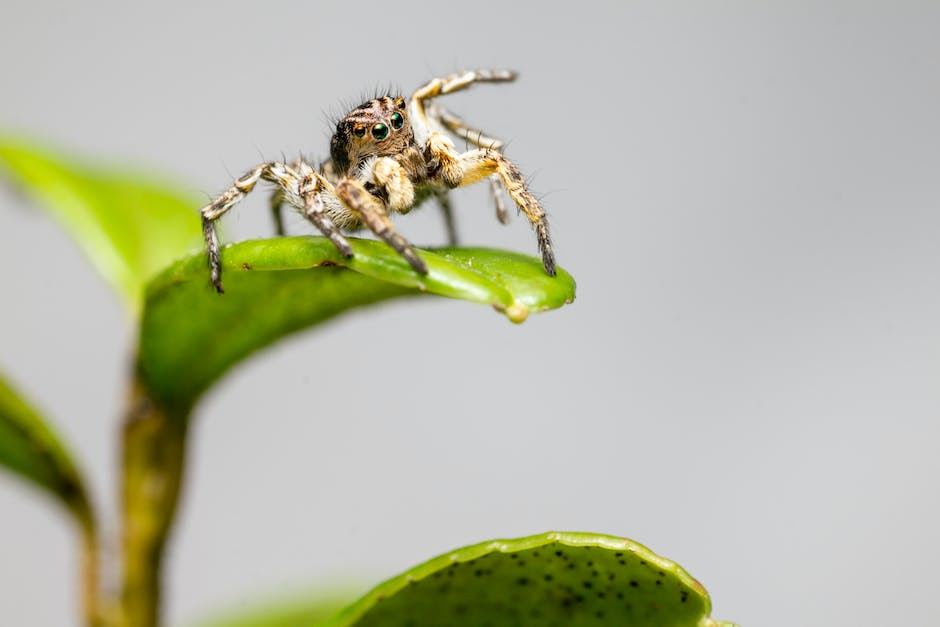
Embarking on a journey to comprehend the fascinating world of jumping spiders has brought us face-to-face with their surprising intelligence, endearing behaviors, and the poignant role they play in our ecosystem. As we leave behind old prejudices and nurture a sense of wonder for these extraordinary arachnids, we foster a deeper connection with the natural world. Our newfound knowledge compels us to advocate for the delicate balance of life, recognizing the silent yet significant contributions of jumping spiders in the vast tapestry of biodiversity that surrounds us.
